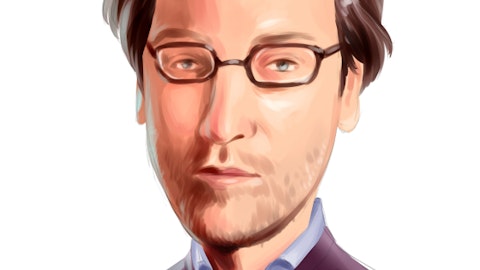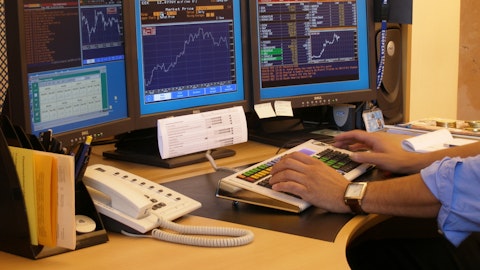Iain Humphries: Yes. So, really the growth CapEx was invested in 2022. So, what we’ve got for the guide for next year is, 2022 is growth investment into next year. So, another way to think about that year-over-year change, so call it 8%. We have 4% pickup from the full-year of M&A and then we’ll get 2% from volume and 2% from price and that volume would come from the growth investment in 2022. So, if there’s additional growth investment in 2023, then there would be a pickup to the current guidance range that we give.
Andy Wittmann: Sorry, are these the numbers you’re talking €“ I was asking about the growth CapEx numbers. It sounds like you’re giving numbers that give income statement lines, what’s the growth CapEx needed to drive the income statement range that you’ve given?
Iain Humphries: There’s no growth CapEx contemplated in next year’s free cash flow.
Andy Wittmann: Okay. So for fiscal 2022, there’s 36 of replacement, 31 of growth capital, and 51 in M&A. So, you’re saying that it is going to be around $36 million replacement, no growth capital this year and then whatever you do in M&A is M&A. So, that’s a $30 million plus tailwind versus the prior year?
Iain Humphries: Andy, one thing you would add to that is, through all our acquisitions that we did last year, they were all very underutilized and we got a lot of additional assets through those acquisitions that helps that growth in the future as well.
Bruce Young: Yes. So, thinking about it on the revenue dollar terms, Andy. So, coastal was obviously done at the end of 2022. So, if you just take the percentage given that 8% pickup, 4% on M&A would be 16 million, 2% on volume would be , another 2% would be another . So, that’s really the bridge from 2022 to the mid-point of 2023 without any growth investment.
Andy Wittmann: Okay. That’s interesting and I guess specifically with the Eco-Pan business growing so well and that being basically all organic, I’m surprised that there’s no CapEx needed for that business to grow it. .
Iain Humphries: No, no, no, you’re not. So, that would come out of the free cash flow. So, looking at
Andy Wittmann: Right. So CapEx.
Iain Humphries: Yes. Correct. And that number
Andy Wittmann: How does CapEx for that?
Iain Humphries: That will be around 9 million.
Andy Wittmann: Okay.
Iain Humphries: So, our free cash flow number is just on the replacement side. It doesn’t contemplate the growth investment.
Andy Wittmann: Okay. So, there’s $9 million for , is there anything in other fleets that you need to grow the business?
Iain Humphries: No. The growth for Eco-Pan is Pan’s and equipment.
Andy Wittmann: Got it. Okay. And then I guess just if you could €“ I want to drill into the margin outlook here. It’s basically like the EBITDA margin guidance is flat year-over-year, but you’re making a definitional change here on adjusted EBITDA, you’re now going to not include director’s compensation and public company’s costs, which is by the way a very positive change and actually a little bit of surprise you’ve been it to this point. But I guess my question is, what are the other sources of variance? 2022 was a year that obviously had some margin pressures from diesel. It sounds like you’re expecting that to €“ like it sounds like after a year of those challenges on diesel that you’re getting the rates up. So, I guess I’m just curious as to if we should be thinking about margin recovery, it sounds like, Bruce you made a comment that you’re recovering dollars, but what about the prospect of recovering margin percentage?
What are the variables that are out there that could allow that to occur?
Bruce Young: Fuel is the biggest one that we deal with there. Everything else is stabilized at a new level and then really it comes down to just getting better rates over time.
Andy Wittmann: Got it. Are you seeing €“ the labor had been somewhat of a challenge as well, has that stabilized, and do you feel like that’s under better control today than it was maybe 6 or 9 months ago?
Bruce Young: Yes, it’s definitely more stable today than what we had seen over the last year.
Andy Wittmann: Got it. Okay. Thanks, guys.
Bruce Young: Thanks, Andy.


